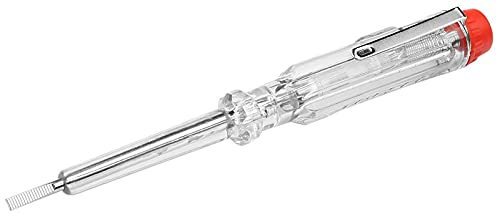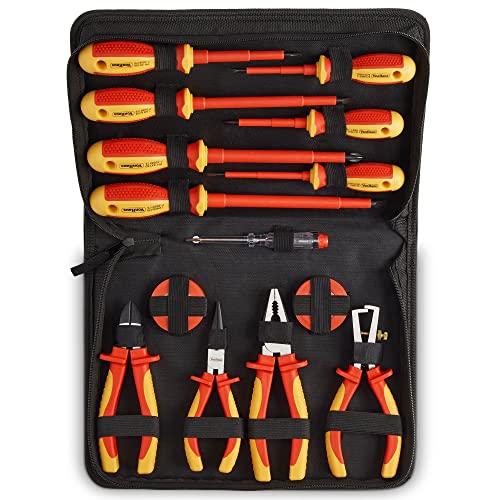You are using an out of date browser. It may not display this or other websites correctly.
You should upgrade or use an alternative browser.
You should upgrade or use an alternative browser.
13amp outdoor ev charging socket
- Thread starter robv
- Start date

Help Support Talk Electrician Forum:
This site may earn a commission from merchant affiliate
links, including eBay, Amazon, and others.
Iv heard loads of horror stories about normal 3 pin sockets warping cracking etc that's why I'd be more comfortable using the thicker cable. The run from CU to socket position is only about 3 metres.2.5 T&E on a 16A RCBO will be fine. I charge my EV overnight on an outdoor 13A socket, charge rate set at 10A, it doesn't even get warm.
Iv heard loads of horror stories about normal 3 pin sockets warping cracking etc that's why I'd be more comfortable using the thicker cable. The run from CU to socket position is only about 3 metres.
The cable size won’t stop cheap sockets from over heating BUT a proper EV point would
Yes I would only ever get a EV marked socket nothing elseThe cable size won’t stop cheap sockets from over heating BUT a proper EV point would
mainline
Well-known member
- Joined
- Feb 9, 2022
- Messages
- 126
- Reaction score
- 80
That depends on how small the cable isThe cable size won’t stop cheap sockets from over heating BUT a proper EV point would
Using 4mm cable won't make the socket or plug a different temperature than using a 2.5mm cable! Heat is caused by resistance in the plug/socket contacts. Use a quality EV rated socket plus a quality charger cable and there will be no problem.

£499.00
Davlex Commercial Electric Convection Oven Double Fan YXD1AE Bake Roast Browning
Davlex Catering Equipment

£839.00
Davlex Large 108 Litre Commercial Electric Convection Oven Double Fan & Steam Humidity YXD-6A-H108L Bake Roast Browning
Davlex Catering Equipment

£249.99
Davlex four 4 pot baine marie large tank 32 litre soup food doner sauce warmer commercial electric
Davlex Catering Equipment

£25.84
Rail for PV Solar Panel Installation Includes End Clamp and Middle Clamp (Set 2(For 30mm))
KA KE LI MAO YI

£18.57
Rail for PV Solar Panel Installation Includes End Clamp and Middle Clamp (Set 1(For 30mm))
KA KE LI MAO YI

£5.99
£7.99
2-in-1 High Torque Strong Magnetic Screwdriver Electricity Detector, Electrical Screwdriver Electrical Tester,Voltage Tester Screwdriver for Electrician Tools (2Sets)
Shenzhen Xudu E-commerce Co Ltd

£18.58
Rail for PV Solar Panel Installation Includes End Clamp and Middle Clamp (Set 1(For 35mm))
KA KE LI MAO YI

£89.99
£107.99
Buffalo Stainless Steel Soup Kettle 10L Commercial Electric Jug 360X345Mm
Amazon.co.uk
It seems to me a ridiculous, arguably unacceptable, situation when different basic characteristics of a British Standard device are available. ie ones which can actually operate at nominal capacity, and a vast majority which can only reliably supply a smaller load.
Presumably the sockets "OK'd" for EV charging would also be suitable for (eg) immersion heater, kettle, and cooker hob applications, where component overheating is commonly found. In fact the EV versions perform as one would expect something nominally rated at 13amps.
I can only find an old copy of BS1363, and that appears to require type testing at a 14amp test current. That's a very small safety margin to allow for deterioration due to wear and tear and perhaps this is the basis of many problems.
What is needed, IMO, is an upgrade of the BS to require ALL sockets to be capable of their nominal 13amp capacity for a reasonable lifetime, OR revised to be a 10amp device, with a different standard to provide for higher loads.
Presumably the sockets "OK'd" for EV charging would also be suitable for (eg) immersion heater, kettle, and cooker hob applications, where component overheating is commonly found. In fact the EV versions perform as one would expect something nominally rated at 13amps.
I can only find an old copy of BS1363, and that appears to require type testing at a 14amp test current. That's a very small safety margin to allow for deterioration due to wear and tear and perhaps this is the basis of many problems.
What is needed, IMO, is an upgrade of the BS to require ALL sockets to be capable of their nominal 13amp capacity for a reasonable lifetime, OR revised to be a 10amp device, with a different standard to provide for higher loads.
That's quite a fair comment. I take it the EV charging 3 pin sockets have reinforced contacts at the back where they get wired in. As opposed to bog standard sockets you find round the houseIt seems to me a ridiculous, arguably unacceptable, situation when different basic characteristics of a British Standard device are available. ie ones which can actually operate at nominal capacity, and a vast majority which can only reliably supply a smaller load.
Presumably the sockets "OK'd" for EV charging would also be suitable for (eg) immersion heater, kettle, and cooker hob applications, where component overheating is commonly found. In fact the EV versions perform as one would expect something nominally rated at 13amps.
I can only find an old copy of BS1363, and that appears to require type testing at a 14amp test current. That's a very small safety margin to allow for deterioration due to wear and tear and perhaps this is the basis of many problems.
What is needed, IMO, is an upgrade of the BS to require ALL sockets to be capable of their nominal 13amp capacity for a reasonable lifetime, OR revised to be a 10amp device, with a different standard to provide for higher loads.
OK,,, so you have the right idea with using a socket designed for EV charging,,, however you’ll also need an O-Pen protection device connected in the (new) circuit thats supplying your socket (if you’re car will be outdoors whilst charging)
OK,,, so you have the right idea with using a socket designed for EV charging,,, however you’ll also need an O-Pen protection device connected in the (new) circuit thats supplying your socket (if you’re car will be outdoors whilst charging)
Not sure i totally agree with this as granny chargers are intended to be plugged in any where
Granny chargers don’t contain O-Pen protectionNot sure i totally agree with this as granny chargers are intended to be plugged in any where
722 applies to all supplies for EV charging and requires a way to protect against O-Pen faults…… and the OP was on about installing a socket to charge their EV
Yes it will, however none of those can protect you from O-pen faultsHi, I've heard a little bit about these. Will the circuit not already be protected by the inbuilt CPC wire in the cable and the RCD at the consumer unit and the rcbo device built into the outdoor socket?
Is it possible to install some sort of open pen fault protection in an outdoor 13amp socket for EV charging? If not then I,ll have to completely scrap the idea and just get unlooped and have a proper charger installed. Not worth scrimping of H&S for the sake of the garden dug up for a short while.
The result going forward will be better for you, even if it does cost significantly more.Is it possible to install some sort of open pen fault protection in an outdoor 13amp socket for EV charging? If not then I,ll have to completely scrap the idea and just get unlooped and have a proper charger installed. Not worth scrimping of H&S for the sake of the garden dug up for a short while.
You can’t I’m afraid, You’d need something like a Matt-e device fitting at the supply end of the cable.Is it possible to install some sort of open pen fault protection in an outdoor 13amp socket for EV charging? If not then I,ll have to completely scrap the idea and just get unlooped and have a proper charger installed. Not worth scrimping of H&S for the sake of the garden dug up for a short while.
mainline
Well-known member
- Joined
- Feb 9, 2022
- Messages
- 126
- Reaction score
- 80
What sort of earthing system have you ?We are supplied from our neighbour so it would involve our garden to be dug up unfortunately. The dno (electricity north west) has said they could do it for free but it's just all the upheaval and mess. I'm just trying to find a way round this safely without unlooping. Btw I would never dream of just plugging it into a normal household socket that's why I want to get this setup installed
Looking at the longer term as has been previously said it may be worth allowing the DNO to do the dig now while it is free than wait a few years and when you really need a proper chargepoint you find out it is going to costIs it possible to install some sort of open pen fault protection in an outdoor 13amp socket for EV charging? If not then I,ll have to completely scrap the idea and just get unlooped and have a proper charger installed. Not worth scrimping of H&S for the sake of the garden dug up for a short while.
I have heard it from a few sources that it will not always be a free option and at some point the DNO's will start charging not only for the unlooping but also any mains reinforcement needed to accomodate the extra EV loads in the street / road so getting in early may be a better option
Similar threads
- Replies
- 17
- Views
- 2K
Latest posts
-
Concerned about curtain pole location.
- Latest: connormcleod
-
-
-
-























































